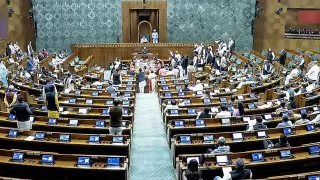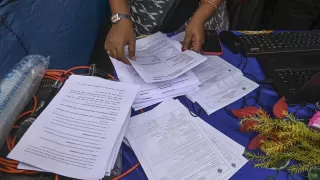In recent weeks, a sweeping directive from the has brought fresh urgency to the debate around public safety and animal welfare in India. With incidents of dog-bite cases on the rise and mounting concerns over stray canines in public places, the Court has ordered educational institutions, hospitals, bus stands, railway stations and other public amenities to take decisive action. From proper fencing to the removal of stray dogs from vulnerable premises, the message is clear: the presence of stray animals in spaces where children, patients and commuters gather can no longer be treated as a minor nuisance.
The fallout of the directive has been immediate. Local self-governments are now tasked with the responsibility of picking up stray dogs from designated high-risk areas, vaccinating and sterilising them under the Animal Birth Control Rules, and ensuring they do not return to the very premises from which they were removed. The directive seeks to end the whack-a-mole scenario in which stray dogs re-appear at schools, hospitals and other public hubs even after removal. As these institutions brace to comply, the broader implications for civic bodies, municipal resources and animal welfare protocols are becoming plain.
Yet the path forward remains full of complexities. While the directive underscores the urgency of public safety, operational questions abound: Do municipal bodies currently have the infrastructure to handle large-scale capture, sterilisation and sheltering? What protections exist for the animals themselves? And how will the new rules affect the delicate balance between public interest and humane treatment of stray dogs? In the paragraphs that follow, we explore the key dimensions of the Court’s order, the anticipated changes at the ground level, and the challenges that lie ahead.
Key Provisions of the Court Order
The Court’s directive mandates that every premise classified as “sensitive” — including educational institutions, hospitals, bus-stands, railway stations and public sports complexes — must be securely fenced to prevent the entry of stray dogs. Further, it holds that the local self-government institutions must actively pick up stray dogs from such areas, vaccinate and sterilise them in compliance with the , and transfer them to designated shelters. Crucially, the order specifies that once removed from these premises, stray dogs “must not be released to the same spot from which they were picked up,” the Court observed, “permitting the same would frustrate the very purpose of liberating such institutions from the presence of stray dogs.”
Besides removal, the Court directed periodic inspections by local bodies to ensure that no stray-dog habitats persist at the targeted premises. This implies establishing a sustained mechanism rather than a one-off drive. The proposal also empowers municipal agencies to pursue “forceful” removal if necessary and to hold individuals or organisations legally accountable if they obstruct the exercise. In short, the directive shifts stray-dog management in public-safety zones into high gear.
Moreover, the Court broadened its scope by linking the stray-dog issue with stray-cattle and highway safety. It affirmed earlier high-court directions to remove stray cattle and other animals from roads, expressways and highways, reinforcing the principle that public spaces must remain free from animal-induced hazards. The Chief Secretaries of all States and Union Territories were instructed to ensure compliance, file status reports, and develop accountability mechanisms. The order thereby reiterates that animal-control isn’t just an urban affair but a national public-safety obligation.
Implications for Public Spaces & Institutions
For schools, hospitals and transit hubs, the directive means an operational shake-up. Fencing open perimeters, scheduling routine inspections, and coordinating with municipal agencies for stray-dog removal will now feature prominently in institutional risk-management plans. Schools will need to ensure that play-areas, gates and perimeter fences cannot be easily breached by animals; hospitals must review their access zones and waiting-areas; bus-stands and depots must build dog-free zones or earmark feeding spots away from commuter movement.
From a local government perspective, the order raises both logistical and budgetary challenges. Capturing stray dogs, driving mass sterilisation and vaccination campaigns, setting up designated shelters (or working with existing ones) and ensuring that dogs are not released back into high-risk zones: all these demand human, veterinary and infrastructural resources. There is also a need for awareness-campaigns to discourage informal feeding in and around sensitive areas, since the Court has flagged that new stray-dog habitats often emerge via neglected or neglected zones where feeding and hiding spots remain.
Importantly, the directive could reshape public-animal interactions in the following ways: community feeders may need to move to approved feeding points; municipal agencies may expand dedicated animal-capture squads; institutions might engage with stakeholders (staff, parents, patients, commuters) to report stray-dog sightings promptly; and feeding or sheltering of stray dogs near sensitive premises might be restricted or regulated more strictly.
Challenges and Critical Considerations
While the Court’s goal of enhancing public safety is compelling, implementation poses considerable practical issues. One of the central questions is whether available shelters and pounds can absorb the influx of stray dogs removed from high-risk locations. As noted by observers, many municipal shelters are already overstretched, and large-scale relocation without adequate capacity may risk crowding, disease or animal-welfare concerns.
Another critical consideration is the compatibility with existing legislation. The Animal Birth Control Rules generally envisage sterilising, vaccinating and releasing stray dogs back into their original territory — unless they are rabid or aggressive. The Court’s order, by insisting that dogs removed from sensitive premises must not return there, may require clarified definitions and protocols to avoid legal and welfare‐based conflicts. Also, what constitutes “aggressive behaviour” requires precise definition to avoid arbitrary classification.
Resistance from animal-rights groups and the public must also be factored in. Some commentators have argued that removal of street dogs without community engagement or alternative habitat planning could be “unscientific” or “ineffective.” At the same time, the risk to children, patients and commuters from unchecked stray-dog incidents cannot be discounted. Its success will hinge on the cooperation of municipal agencies, institutions and the public at large.
What Lies Ahead: Next Steps for Compliance
Implementation of the directive will revolve around a few core steps. First, institutions must audit their premises (fencing, points of entry/exit, feeding zones, tree-cover that shelters strays) and schedule remediation—fence repair, gate upgrades, surveillance coverage, stray-dog monitoring. Second, municipal bodies must map “sensitive premises” across their jurisdictions (schools, hospitals, bus stands, depots, stations) and compile lists of stray-dog hotspots in coordination with institutions. Third, capture, sterilisation and relocation drives must be scaled up, with veterinary oversight, appropriate shelters and post‐removal monitoring.
A parallel track involves public-awareness measures: informing institution-stakeholders (teachers, staff, parents, hospital visitors, commuters) about stray-dog hazards, encouraging timely reporting of stray-dog presence, discouraging informal feeding near sensitive zones, and maintaining cleanliness (to deny stray-dog habitats). Local bodies would benefit from helplines, mobile apps or community reporting mechanisms.
In the legal-compliance domain, periodic status-reports by States and UTs (via Chief Secretaries) will be expected — documenting the institutional audits, stray-dog removal data, shelter capacity, feeding-zone arrival, sterilisation rates, and flagged zones still requiring action. Institutions and municipalities will probably face consequences if the inspections reveal persistent stray-dog presence despite directive issuance.
Balancing Safety And Humane Treatment
The directive’s most delicate balancing act lies between human-safety imperatives and compassionate, science-based animal-welfare practices. On one hand, children, patients and commuters have a right to safe access to public facilities; on the other, stray dogs are part of urban ecologies, and mass removal or relocation without robust protocols can create secondary welfare issues. The Court’s order reflects an attempt to bridge this tension — by mandating sterilisation and vaccination while restricting the release back into sensitive areas.
For the directive to succeed, institutions, municipal agencies, and animal-welfare partners must collaborate. Sterilisation, vaccination, post-capture care, tracking of relocated dogs, creation of feeding zones, monitoring of shelters, and regular inspections will all need coordinated execution. Without this, the risk is that stray dogs will simply relapse into old patterns or that removal efforts will provoke public backlash or welfare crises. Humane, effective stray-dog management requires much more than fencing and removal—it demands planning, resources and community participation.
In sum, the Supreme Court’s directive marks a significant step in India’s efforts to manage stray-dog risks in public-space settings. The real test will be in the weeks and months ahead—whether institutions shore up their defences, whether local bodies mobilise resources, and whether stray-dog populations in sensitive zones genuinely decline while animal‐welfare safeguards remain intact. The outcome will speak volumes about India’s capacity to safeguard both human lives and the animals who share the urban environment.
Also Read: Bihar Polls 2025: Record Turnout – NDA Edge or INDIA Boost?

























